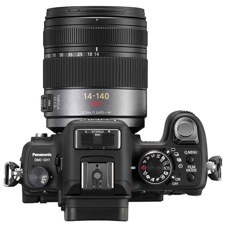DIY Documentary Part 1: The Shoot
Image
I’ve shot the entire thing myself on a Panasonic GH1. I have the 14-140mm kit lens, the Panasonic 20mm f1.7 pancake lens, plus a 50mm FD lens (that I didn’t use).

The GH1, importantly with the GH13 firmware hack, has acquitted itself admirably. The optics are good in this thing. The sore points are the low bit rate recording and the interlaced wrapper, so the firmware hack has been a godsend.
I honestly way prefer the footage from the GH1 and other video SLRs to that of prosumer-level dedicated video cameras. It’s way more film-like (if I can drop that bomb without unpacking it at all). So I think using this camera was the right choice. It was also, as they say, the camera I had – prosumer vidcams are considerably more expensive.
When I began, I was using the kit lens near-exclusively, thinking that the long zoom would give me some versatility, and its decent autofocus would help me out. Its downside is that it is slow, and thus has a broad, unfilmic depth of field.
As it turned out, I did not find the autofocus good at all. Perhaps it is for some purposes, but my early footage has unusable parts when the lens is hunting for focus, or choosing the wrong plane. So I went manual focus, and as I got used to the focus ring on the 20mm pancake, I started using that a lot more. That lens be pretty yo.
I’m not a pro cinematographer or cameraman by a long shot. Photography has been a hobby for a while, but motion footage in a doc context has its own challenges, mostly that you have to be timely with your shutter, aperture and focus adjustments, and you have to be stable. I love handheld footage. But handheld on a shoulder-mounted TV camera is one thing, handheld in an SLR body another; the tiny body means your wrists’ natural movements can manifest as footage-wrecking jitter. My goal was to stabilize that shit enough to look like regular handheld film or TV camera footage.
To that end, I used simply a Gorillapod. Again, it was the thing I already had, and I wasn’t looking to shell out a stack of hunnys for some steadicam-alike rig. (I also considered a Spider Brace as it looks like a good option.)
Did it work? Most of the time. If I was standing still, it worked great – you can rest two of the legs of the gorillapod on your person, forming them to the right fit. When I was on the move, however, the shakes got bad. Sometimes they are manageable, but other times, less so. There definitely could be better solutions, I’d say.
One last note: the tiny size of VSLRs is a huge advantage for documentary. People seem to get less self-conscious around a smaller camera, and indeed a lot of people will just think you’re taking stills. And of course you can always have it on you in case something happens. That’s reason enough not to trick it out too hard with steadicam rigs and matte boxes and all that jazz.
Sound
Nothing beats having a sound guy. He’ll roll on in and clip lavs on everyone while holding a boom and making sure the levels are tight. Unfortunately, he costs $500 / day.
So I essentially copied the sound recording techniques of my employer, or at least the old CHUM part. They never had a sound guy; the cameraman would clip a lav onto the interview subject and wire the transmitter into the camera, with auto-gain enabled.

You can do this exact thing with video SLRs, but their audio hardware is less developed and the auto-gain is not as good. So I record from lavs into a separate field recorder (the Zoom H4N), whose auto-gain has yet to let me down. The downside is of course syncing in post, but I didn’t find that to be so bad. I’m using the lavs mostly for interviews, which tend to be long clips. In Final Cut, you can sync up in a sequence and then use that sequence exactly like you would a clip (YMMV in Avid or other NLEs). Anyway, the results are great with minimal headaches. The lavs are expensive, but I considered it a worthwhile expense. Never underestimate the production value that crisp sound supplies.
I also used the Panasonic shotgun mic on the camera, for when I was shooting verité stuff and didn’t have people miked up. It’s decent.
In Summation
I was quite happy with the results. You can certainly get away with shooting a doc on these cameras.1
1 One issue that presents itself is TV broadcasters’ technical requirements, which may specify a bitrate higher than these cameras produce. The tech standards papers are pie-in-the-sky bullshit cooked up by fussy engineers, but they can still cause a problem. I’m not concerned about it for this project – and the GH13 hack can up the bitrate to something pretty crazy – but it’s worth looking into before you start your project, if you’re hoping to get on TV.